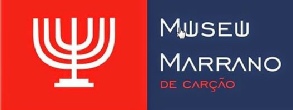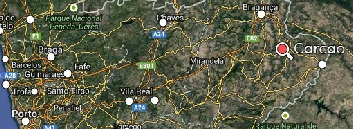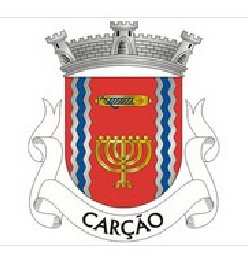|
PART 1 T O P I C |
|
|
|
|
|
|
|
|
|
|
|
|
|
|
|
|
|
|
JewishWikipedia.info
CARÇÃO and the JEWS
SUMMARY
__________________

MARRANO CUSTOMS AT YOM KIPPUR (in 1693) IN CARÇÃO
From Almocreve um Retrato das Gentes de Carção
CarcaOur dear friend Fernanda Guimarães continues to bring to the light of day the lives of the Marranos of Portugal during the time of the Inquisition. She is one of the few people heroically struggling every day to remind the world of a forgotten people. Unlike the victims of the Holocaust, there are no memorials to honor the victims of the Inquisition, nor is there a day in the Jewish calendar commemorating their plight. As observed by Alexandre Teixeira Mendes in the recent book, "Barros Basto, the Marrano Mirage", Marranos are not only exiles amongst the nations, they are also exiles amongst the Jewish Nation.
Lately, Fernanda has been researching the Inquisition cases of the Marranos of Carção, a small village in the district of Vimioso, in the northern province of Tras-os-Montes (Behind the Mountains) with over two hundred files in the Torre de Tombo, the national archives. Although the (un)Holy office of the Inquisition was a terrifying iron monster, the Inquisitors kept meticulous records, allowing us, four hundred years later to get a a glimpse of the lives of its victims. Everything was recorded by the Inquisition scribes: oral examinations, witness statements, confessions, prison behaviour, and the proceedings themselves. Comprehensive inventories were made of the prisoners' assets. Genealogical inquiries were extensive. Staff doctors were required to be present at all torture sessions, often leaving meticulous observations of each victim. Each file has a surprise: a recipe of a prohibited dish, a Hebrew prayer, the location of a secret cemetery, a victim gone mad, a corrupt official, a connection to the diaspora, a legend or myth, etc . Each case has a unique story, not of an anonymous number, but of a real life drama undiminished by the passage of time.
There was something special about the Marranos of Carção. They were proud of their ancestry and defiant of the Inquisition. The local priest feared they would piss in his "holy wine". They bribed a couple of the Inquisitors. They continued their practices in secret even after fourteen of their own were burned alive in one day by the Inquisition.
For Yom Kippur, "O Dia Grande " (The Big Day), the men were to abstain from chewing tobacco. Rinsing of the mouth and washing of hands was permitted. Fifteen days prior to Yom Kippur, no meat was to be consumed. At the end of Yom Kippur, the fast was broken with a meal of boiled cod and chick peas, a national staple today.
As Fernanda and other like-minded people work diligently, giving unstintingly of their time to dignify the history of an exiled people, more details will be revealed about their until now mostly obscure lives which will give purpose and meaning to the Marranos of today. We are grateful to all those who refuse to allow the Inquisition to succeed.

Carção is a small village in the Braganza region of Northern Portugal
|
|
|
|
Carção é uma freguesia portuguesa do concelho de Vimioso, no distrito de Bragança, região Norte de Portugal. Os habitantes de Carção estão ligados ao comércio desde tempos muito antigos. Um grande número dos seus habitantes são descendentes de judeus que se refugiaram no século XV nas aldeias raianas. A importância do legado judaico revela-se no símbolo da Junta de Freguesia de Carção que tem no brasão uma mezuzá e uma menorá, o candelabro de sete braços, um dos mais antigos símbolos judaicos. |
Carção is a parish in the Vimioso municipality in the district of Bragança, Northern Portugal. The Carção inhabitants are linked to trade since ancient times. Many of its inhabitants are descendants of Jews who took refuge in the fifteenth century in border villages. The importance of this Jewish heritage is revealed in the Carção Parish Council coat of arms which has a mezuzah and a menorah, the seven-branched candelabrum which is one of the oldest Jewish symbols. |

Carção
THE
INCREDIBLE
STORY OF THE JEWISH PEOPLE

